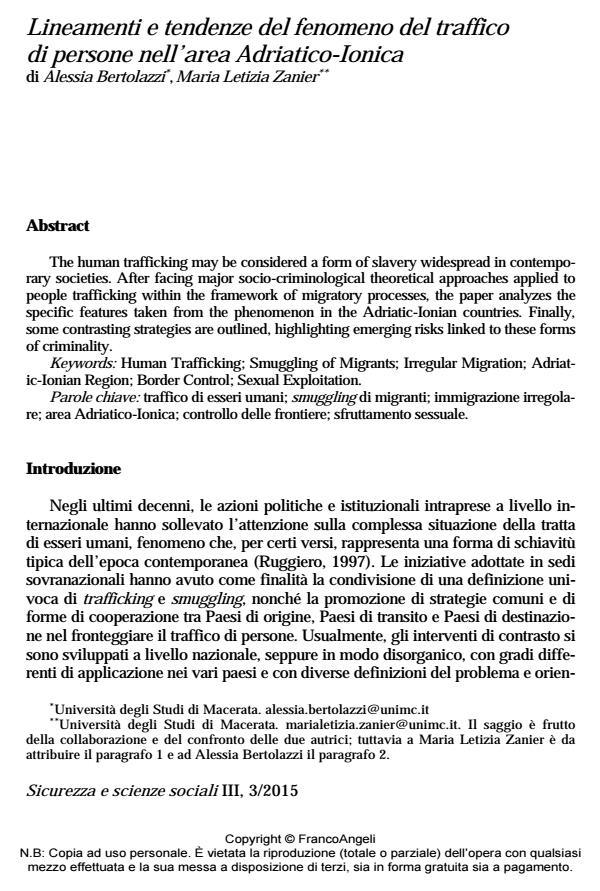Lineamenti e tendenze del fenomeno del traffico di persone nell’area Adriatico-Ionica
Journal title SICUREZZA E SCIENZE SOCIALI
Author/s Alessia Bertolazzi, Maria Letizia Zanier
Publishing Year 2016 Issue 2015/3
Language Italian Pages 13 P. 48-60 File size 69 KB
DOI 10.3280/SISS2015-003005
DOI is like a bar code for intellectual property: to have more infomation
click here
Below, you can see the article first page
If you want to buy this article in PDF format, you can do it, following the instructions to buy download credits

FrancoAngeli is member of Publishers International Linking Association, Inc (PILA), a not-for-profit association which run the CrossRef service enabling links to and from online scholarly content.
The human trafficking may be considered a form of slavery widespread in contemporary societies. After facing major socio-criminological theoretical approaches applied to people trafficking within the framework of migratory processes, the paper analyzes the specific features taken from the phenomenon in the Adriatic-Ionian countries. Finally, some contrasting strategies are outlined, highlighting emerging risks linked to these forms of criminality.
Keywords: Human Trafficking; Smuggling of Migrants; Irregular Migration; Adriatic-Ionian Region; Border Control; Sexual Exploitation.
Alessia Bertolazzi, Maria Letizia Zanier, Lineamenti e tendenze del fenomeno del traffico di persone nell’area Adriatico-Ionica in "SICUREZZA E SCIENZE SOCIALI" 3/2015, pp 48-60, DOI: 10.3280/SISS2015-003005